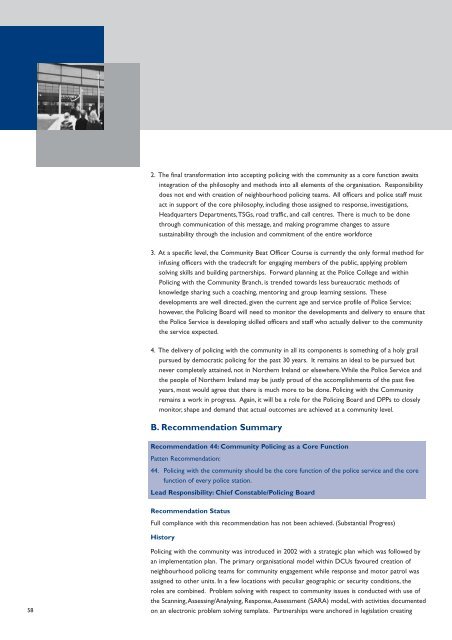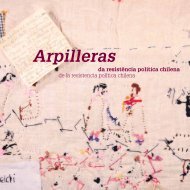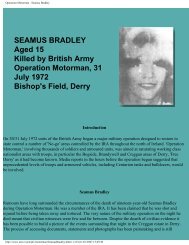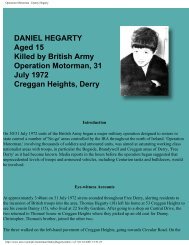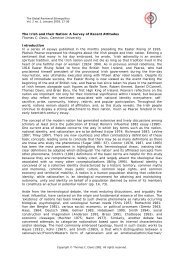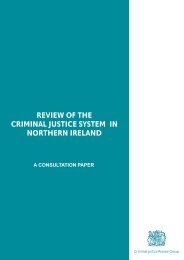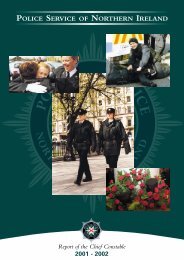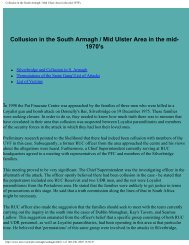11293 report 19 - CAIN - University of Ulster
11293 report 19 - CAIN - University of Ulster
11293 report 19 - CAIN - University of Ulster
You also want an ePaper? Increase the reach of your titles
YUMPU automatically turns print PDFs into web optimized ePapers that Google loves.
2. The final transformation into accepting policing with the community as a core function awaitsintegration <strong>of</strong> the philosophy and methods into all elements <strong>of</strong> the organisation. Responsibilitydoes not end with creation <strong>of</strong> neighbourhood policing teams. All <strong>of</strong>ficers and police staff mustact in support <strong>of</strong> the core philosophy, including those assigned to response, investigations,Headquarters Departments,TSGs, road traffic, and call centres. There is much to be donethrough communication <strong>of</strong> this message, and making programme changes to assuresustainability through the inclusion and commitment <strong>of</strong> the entire workforce3. At a specific level, the Community Beat Officer Course is currently the only formal method forinfusing <strong>of</strong>ficers with the tradecraft for engaging members <strong>of</strong> the public, applying problemsolving skills and building partnerships. Forward planning at the Police College and withinPolicing with the Community Branch, is trended towards less bureaucratic methods <strong>of</strong>knowledge sharing such a coaching, mentoring and group learning sessions. Thesedevelopments are well directed, given the current age and service pr<strong>of</strong>ile <strong>of</strong> Police Service;however, the Policing Board will need to monitor the developments and delivery to ensure thatthe Police Service is developing skilled <strong>of</strong>ficers and staff who actually deliver to the communitythe service expected.4. The delivery <strong>of</strong> policing with the community in all its components is something <strong>of</strong> a holy grailpursued by democratic policing for the past 30 years. It remains an ideal to be pursued butnever completely attained, not in Northern Ireland or elsewhere.While the Police Service andthe people <strong>of</strong> Northern Ireland may be justly proud <strong>of</strong> the accomplishments <strong>of</strong> the past fiveyears, most would agree that there is much more to be done. Policing with the Communityremains a work in progress. Again, it will be a role for the Policing Board and DPPs to closelymonitor, shape and demand that actual outcomes are achieved at a community level.B. Recommendation SummaryRecommendation 44: Community Policing as a Core FunctionPatten Recommendation:44. Policing with the community should be the core function <strong>of</strong> the police service and the corefunction <strong>of</strong> every police station.Lead Responsibility: Chief Constable/Policing BoardRecommendation StatusFull compliance with this recommendation has not been achieved. (Substantial Progress)History58Policing with the community was introduced in 2002 with a strategic plan which was followed byan implementation plan. The primary organisational model within DCUs favoured creation <strong>of</strong>neighbourhood policing teams for community engagement while response and motor patrol wasassigned to other units. In a few locations with peculiar geographic or security conditions, theroles are combined. Problem solving with respect to community issues is conducted with use <strong>of</strong>the Scanning,Assessing/Analysing, Response,Assessment (SARA) model, with activities documentedon an electronic problem solving template. Partnerships were anchored in legislation creating


